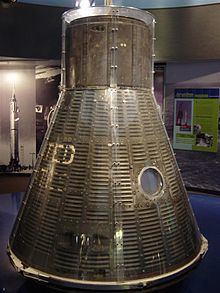Mission type Test flight Apogee 210,300 m Launch mass 1,230 kg Launch date 19 December 1960 | Mission duration 15 minutes, 45 seconds Manufacturer McDonnell Aircraft Distance travelled 378,200 m Date 19 December 1960 Landing date 19 December 1960 | |
 | ||
Mercury-Redstone 1A (MR-1A) was launched on December 19, 1960 from LC-5 at Cape Canaveral, Florida. The mission objectives of this unmanned suborbital flight were to qualify the spacecraft for space flight and qualify the system for an upcoming primate suborbital flight. The spacecraft tested its instrumentation, posigrade rockets, retrorockets and recovery system. The mission was completely successful. The Mercury capsule reached an altitude of 130 miles (210 km) and a range of 235 miles (378 km). The launch vehicle reached a slightly higher velocity than expected - 4,909 miles per hour (7,900 km/h). The Mercury spacecraft was recovered from the Atlantic Ocean by recovery helicopters about 15 minutes after landing. Serial numbers: Mercury Spacecraft #2 was reflown on MR-1A, together with the escape tower from Capsule #8 and the antenna fairing from Capsule #10. Redstone MRLV-3 was used. The flight time was 15 minutes and 45 seconds.
Current location
Mercury spacecraft #2, used in both the Mercury-Redstone 1 and Mercury-Redstone 1A missions, is currently displayed at the NASA Ames Exploration Center, Moffett Federal Airfield, near Mountain View, California.
